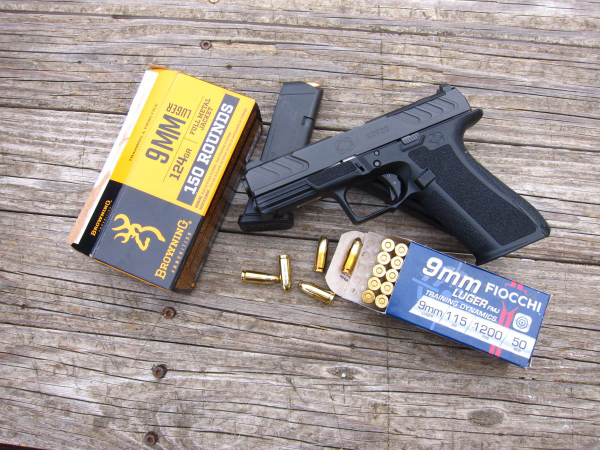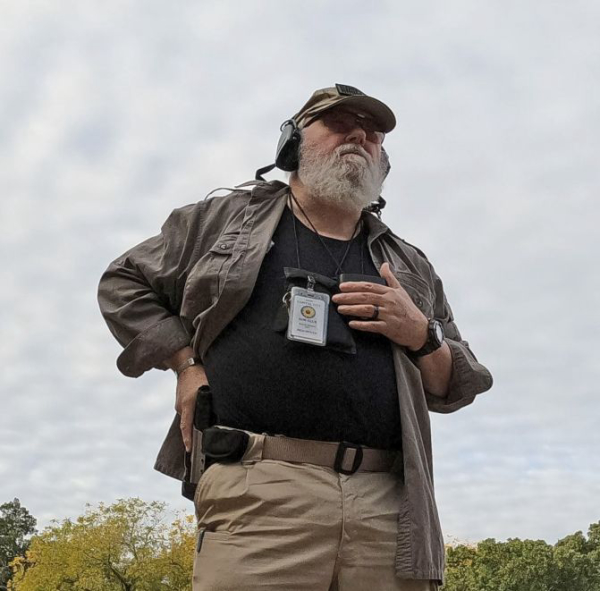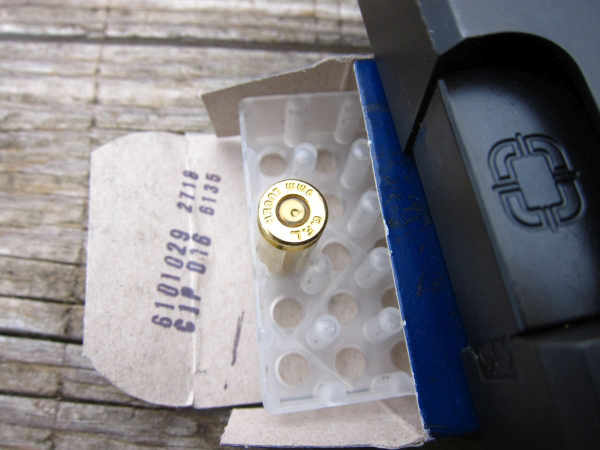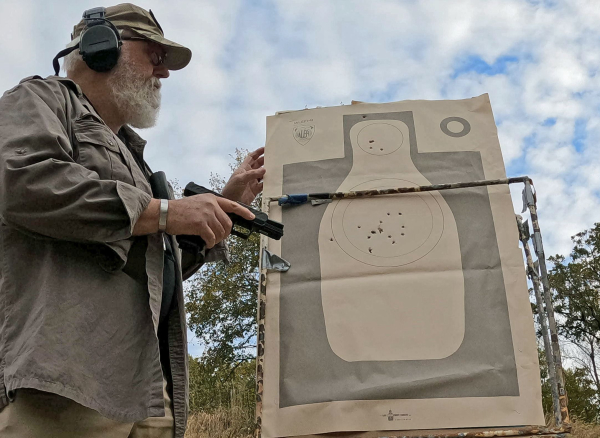After receiving three of the new “Foundation” series pistols from Shadow Systems, examination began with the “crossover” pistol (17-round capacity frame with a ‘compact’ barrel and slide). The Shadow Systems XR920 was originally covered in Shooting Wire and the “first shots” feature appears here.

There have been subsequent range trips with the same sample pistol to accomplish the factory-recommended “break-in” period.
A break-in for a modern striker-fired pistol?
According to YouTube content provider the "Humble Marksman" – referring to a video from Trevor Roe on the Shadow Systems YouTube channel – the question is one of accuracy and how the company builds the accuracy in.
He centers the argument around the fit of the barrel hood to the slide’s ejection port – and that’s a fair point. If you fit it closely enough to enhance accuracy, it will take some wearing in to get reliability.
The fit of the locking block to the barrel foot, ensuring consistent lockup, would be the next component of accuracy; likewise, tight fitting can prevent reliable function until the parts are worn in.
That is an added cost to the pistol but it’s not without advantage.
The pistol system’s ancestor, the GLOCK, required no break-in but (in 9mm) wasn’t tightly accurate. When I elected to go to the G19 for duty use in 2001, I collected 3,000 rounds of ammo. The intent wasn’t to get the gun “broken in.”
It was to help me learn to “fit” the gun. I pointed consistently high, causing me to spend inordinate amounts of time to confirm the sighting solution before firing. I didn’t just do mag dumps, a silly time-killer that proves nothing that’s relevant.
I started with a program; hits from low ready, followed by pairs and failure drills, holster work that followed the same pattern. I prepared range exercises for my trainees using that gun, I took classes with the gun. At the end of three cases of ball, I drew straight to the eyeline and I could, after a fashion, hit what I shot at.

The Shadow Systems guns adjust that with use of a replaceable backstrap that changes angles more than size.
I elected to use an updated break-in program with the new guns. On the first range trip, I confirmed zero of the gun’s high iron sights from a seated rest, followed by trigger drills and work from guard.
This time, I moved to some evaluations. I used Browning 124 gr. FMJ ammo, a Comp-Tac Warrior holster, and I was wearing a shirt for a cover garment. I followed up with Fiocchi 115gr. FMJ “Training Dynamics” ammo, to see if the lighter bullet caused issues.
I started with the Bakersfield PD course. The first shot attempted was a failure to fire, an inauspicious start. The primer was dimpled and the cartridge lit off after reloaded into the magazine. The offending round was from the Browning ammo box.
My times weren’t great. I went over on every stage, but clawed out an adjusted score of 88/100. From there, I did the close-range (10 feet) “high percentage” singles – five reps – starting with hand on the holstered handgun.
I had one miss (still on the silhouette but off the scoring area) and I had two strings over-time. The remainder of the hits were clean, inside the “softball” scoring area on the IALEFI-Q target.
I followed up with my take on the FDLE Stage 2 (shot here at ten feet, from a legit low ready – muzzle aimed in at the dirt), calling for two hits inside a second. I was hitting my stride as all three strings were shot in time (the best at .81 second), all clean.
Now it was time for practice, not evaluation. I did a 6-shot ‘flow’ drill (that’s what we used to call it), this example from Ken Hackathorn from his Wilson Combat YouTube channel series Master Class. The title of this episode is “2-2-2 Skill Drill with Ken Hackathorn - Master Class Episode 26 - With the SFX9 4" - Low Round Count.”


He did it at 10 yards, and used a Wilson Combat steel IDPA target – with a 9-second par. I went from the holster, at five yards, shot on a B-8 repair center. I got it done in 12.52 with a failure to fire in the “weak hand only” string – yes, another failure to fire. It was with Fiocchi ammo this time – the photo of the round is attached. The target featured 2 in the ‘10’ ring, and 4 hits in the X-ring. I shot it from concealment.
I moved back to 15 yards to shoot some drills. These included pairs from the holster, pairs from low ready and singles from low ready. I moved to singles from the holster on the six-inch paddles on the dueling tree. My time for a hit to a single plate was just under 1.5 seconds.
I moved up to five yards and did reload drills. Starting from a draw (holster practice is good), I’d fire the single round in the gun, do a slide-lock reload and make another hit. My average time between shot 1 and shot 2 was around three seconds. That flared magazine well makes a difference. (And this is without the “funnel” that ships with the premium guns from Shadow Systems.)

I shot a six-round “Bill Drill,” from the holster at seven yards on a B-8 repair center. The total time for the draw to six rounds was 3.4 seconds with two hits in the “8” ring, two hits in the “9” ring and two hits inside the “10” ring.
Not bad for a senior citizen.
I finished with 25 rounds of Hornady 124gr XTP +P ammo. I did a bullseye drill from 21 yards, shooting one-handed with right hand followed by one-handed, left hand. I shot 47/50 right-handed and 45/50 with the “wrong” hand.
In an effort to get the gun to stop working, I shot it with two fingers (giving less resistance to recoil to get it to choke); I followed with turning the gun on it’s right side, then left side to check feed and function. I finished by shooting the gun upside down.
There were no stoppages and no more failures to fire.
-- Rich Grassi